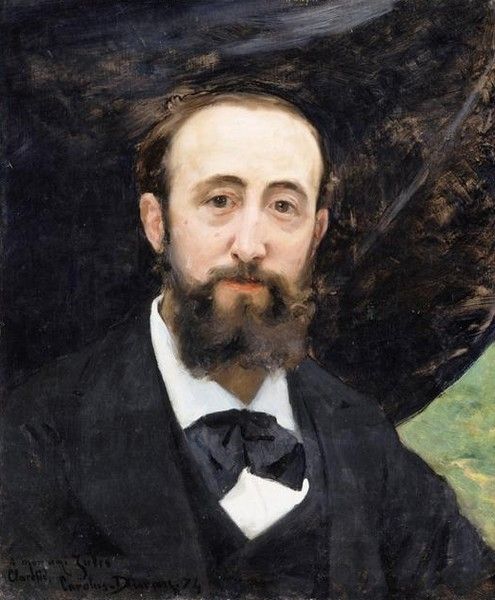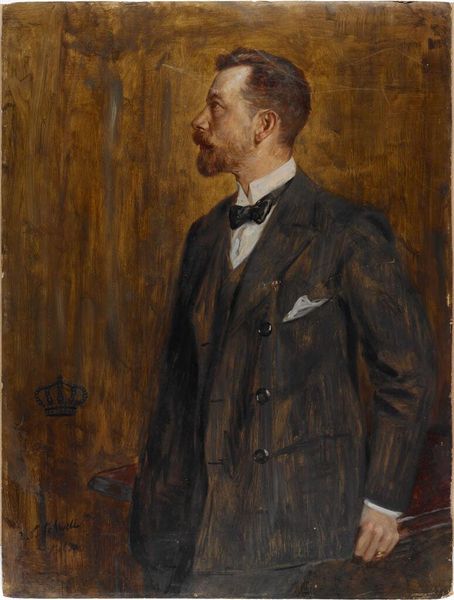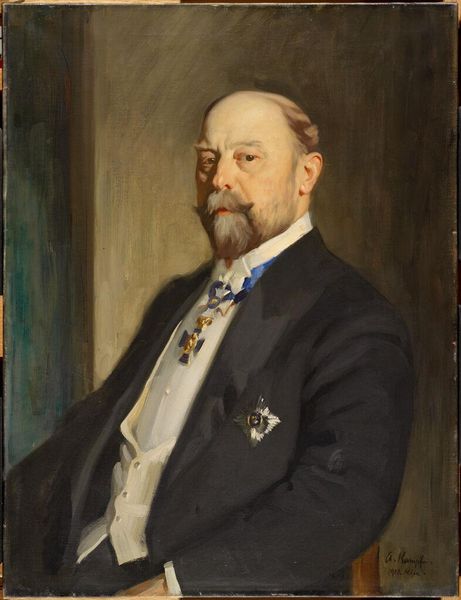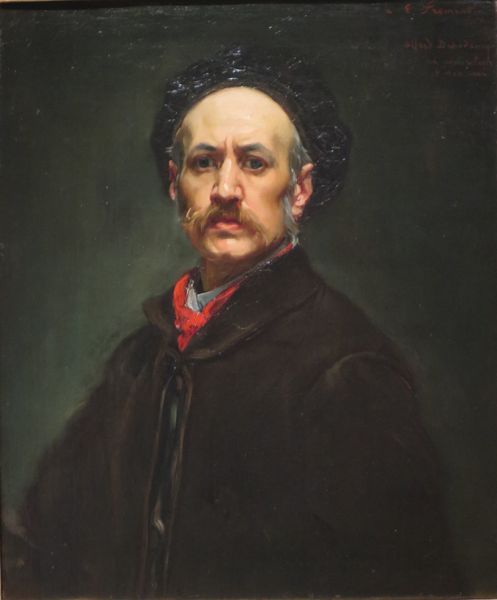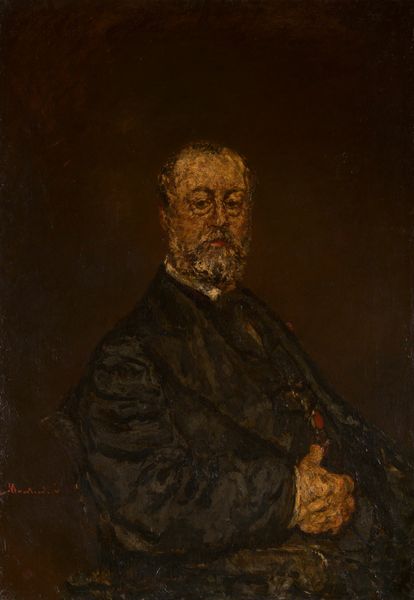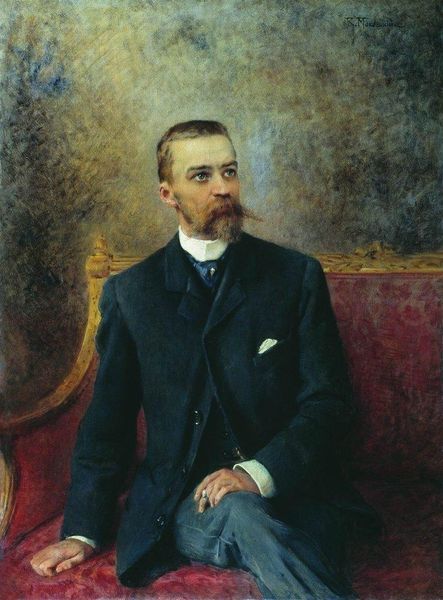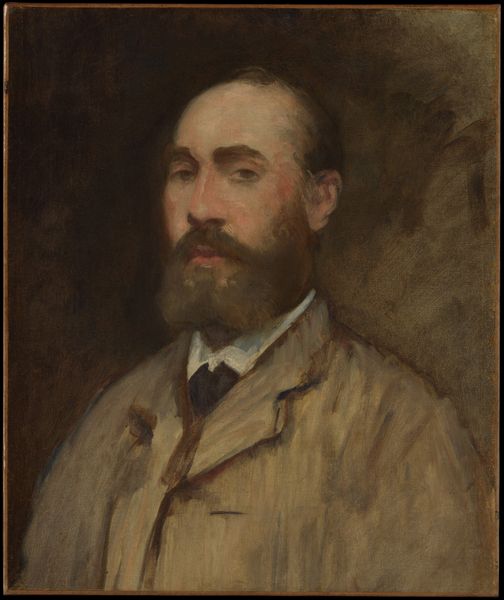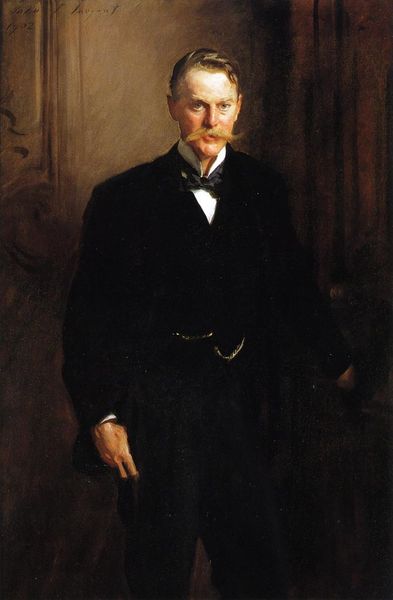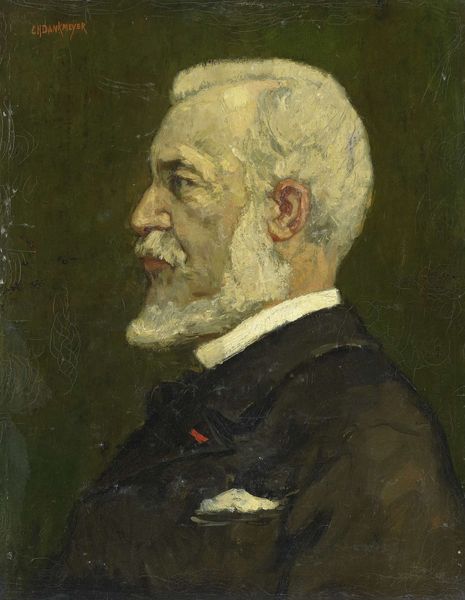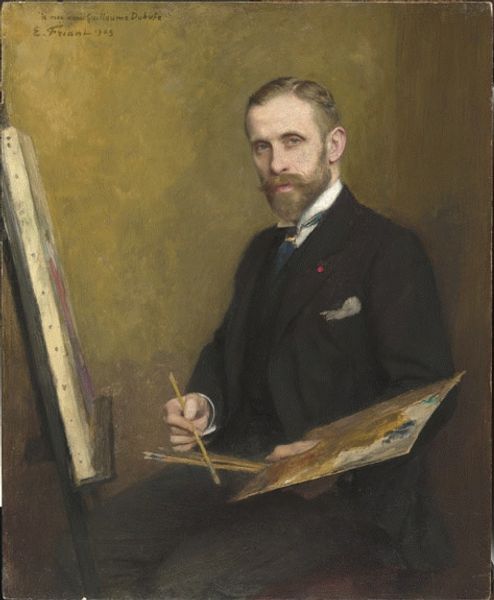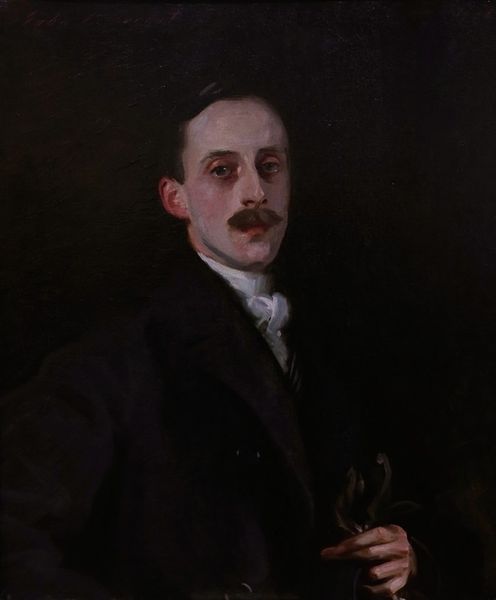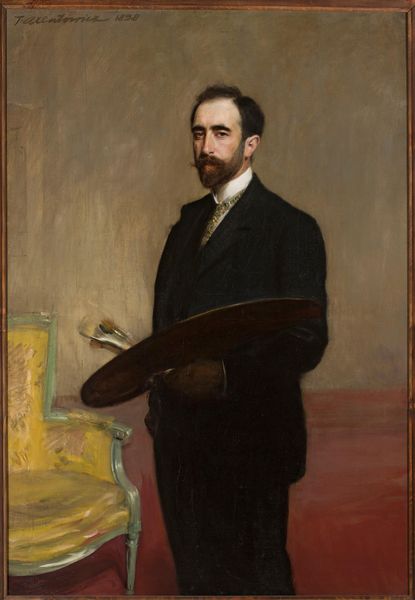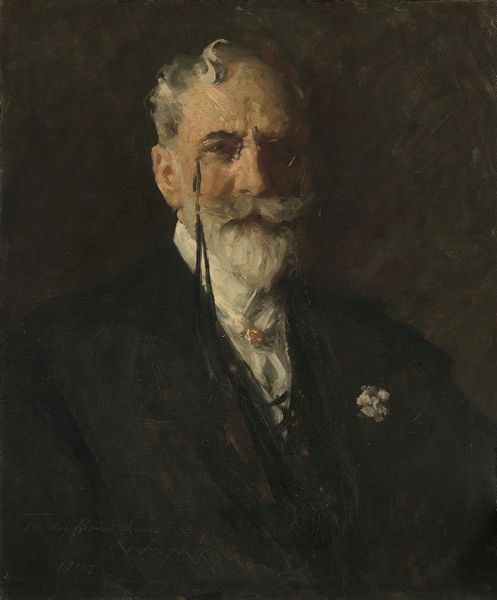
painting, oil-paint
#
portrait
#
portrait
#
painting
#
oil-paint
#
academic-art
#
realism
Copyright: Public Domain: Artvee
Curator: Looking at this striking piece, painted with oil in 1876, we have Raimundo de Madrazo's portrait of Samuel P. Avery. It’s got a real presence, doesn't it? Editor: Absolutely. It strikes me as rather somber, a very considered assessment of the sitter. I notice the deep greens and blacks, the almost reverential way the artist captures Avery’s gaze...it's a study in contained power. What stands out to you? Curator: For me, it's the almost theatrical quality of the attire juxtaposed with that gentle, knowing gaze. That small, almost defiant rose pinned to his lapel – it speaks of a man of culture and quiet rebellion. Do you think there's more than meets the eye with this seemingly straightforward portrait? Editor: Without a doubt. Consider the ascot, that rich, velvety blue, a color associated with loyalty and intellect – perhaps pointing to Avery's patronage of the arts? And then that perfectly coiffed beard – such attention to detail in its shaping; it implies meticulous self-presentation, a very conscious construction of identity. The symbolism feels palpable. Curator: Yes, Madrazo clearly uses these sartorial symbols to telegraph information about Avery. It’s less a snapshot, more a constructed narrative. One wonders about their relationship. There's an intimacy in the way the light catches Avery’s eyes, wouldn't you say? Almost like the artist is privy to an inner world. Editor: I agree; there’s definitely an empathetic quality. But perhaps it is also important to note the tradition Madrazo places this in—this academic style and formal posing speaks to Avery's prominence in artistic circles at the time. There is an acknowledgment of his societal position here. It gives further context for understanding what Madrazo hopes to express with these carefully chosen and constructed visuals. Curator: That's astute; seeing it through the lens of societal placement is fascinating. It adds a layer of depth, making it not just a portrait, but a visual record of a particular moment in cultural history. I hadn't considered how much social commentary could be embedded within such formal constraints. Editor: Precisely. The image is powerful both as a portrait and as a symbol of cultural significance in that time period. It has a unique capability of allowing us to engage both personally and politically. Curator: Well, that's given me a whole new appreciation for what's going on beneath the surface. The subtle details create a multi-layered image of identity, power, and position in society! Editor: Indeed. Hopefully, we've offered our audience a fresh perspective on reading portraits.
Comments
No comments
Be the first to comment and join the conversation on the ultimate creative platform.
